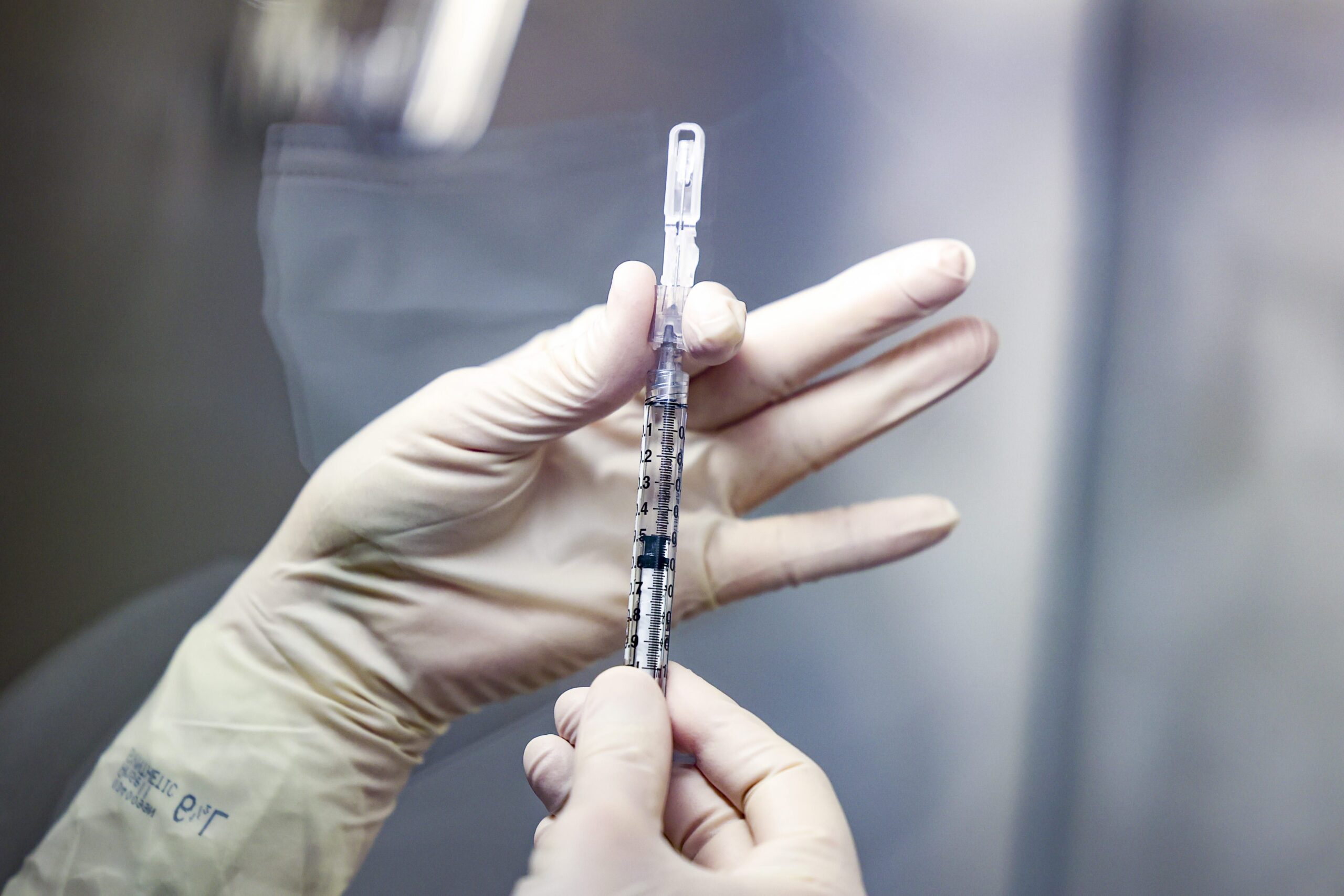[ad_1]

Rocky Mountain Regional VA Medical Center investigational pharmacy technician Sara Berech prepares a dose of the Johnson & Johnson COVID-19 vaccine for a clinical trial on December 15, 2020 in Aurora, Colorado. Michael Ciaglo/Getty Images
Emergency use authorization for Johnson & Johnson’s COVID-19 vaccine is just around the corner. On Friday, the FDA’s Vaccines and Related Biological Products Advisory Committee endorsed the vaccine after a full-day meeting to assess its safety and efficacy data. The FDA usually issues an official authorization within 24 hours of the committee endorsement, meaning that J&J’s vaccine could start shipping as soon as Saturday.
Public health experts have high hopes for the J&J vaccine to help ramp up total vaccine supply in the U.S. because of its single-shot structure and less strict storage requirements than those made by Moderna and Pfizer/BioNTech.
J&J plans to ship 20 million shots in the U.S. by the end of March and an additional 80 million doses before the end of June. Combined with the 300 million doses promised by Moderna and 200 million doses by Pfizer, there will be more than enough to inoculate the entire U.S. population by summer.
While J&J’s single-dose structure has a strong appeal, some people have questioned whether they should get it due to its low efficacy rate. J&J’s global trial data show that the vaccine is only 66 percent effective at preventing symptomatic COVID-19 infections. Its average efficacy rate in the U.S. is slightly higher at 72 percent, still lagging far behind the 95 percent rate achieved by Moderna and Pfizer. Still, for less vulnerable populations, it is far superior than no vaccine at all.
Here’s a rundown of the J&J vaccine’s key metrics compared with Pfizer and Moderna:
Dosage
J&J: One dose.
Moderna: Two doses, given on month apart.
Pfizer/BioNTech: Two doses, given three weeks apart.
Efficacy Rate
J&J: 72 percent effective at preventing symptomatic COVID-19 infection in the U.S.; 85% effective at severe cases.
Moderna: 94.1 percent at symptomatic cases after the second dose; slightly lower efficacy in people 65 and older.
Pfizer/BioNTech: 95 percent against symptomatic cases after the second dose.
Target Population
J&J: People age 18 and older.
Moderna: People age 18 and older.
Pfizer/BioNTech: People age 16 and older.
Side Effects
J&J: Headaches, fatigue and muscle pain are the most common side effects, according to an FDA report released Wednesday.
Moderna: Chills, fever, headache, shortness of breath and pain in the arm, according to trial data and some participants sharing experience on social media.
Pfizer/BioNTech: Chills, fever, fatigue, redness and swelling, according to trial data.
Price (per dose)
All three vaccines will be provided to the public for free (at least for now). But the prices at which they were sold to the federal government under the Operation Warp Speed program vary. Vaccine price is not a major concern to consumers. Yet, it could matter down the road when government programs phase out and if renewal shots are needed.
J&J: $10
Moderna: $15
Pfizer/BioNTech: $20
Supply
J&J: 100 million doses ordered to ship by the end of June; 20 million promised by the end of March.
Moderna: 300 million doses ordered; 100 million promised by the end of March; 41 million already administered in the U.S.
Pfizer/BioNTech: 200 million doses ordered to ship by the end of July; 100 million promised by the end of March.
[ad_2]
Source link







